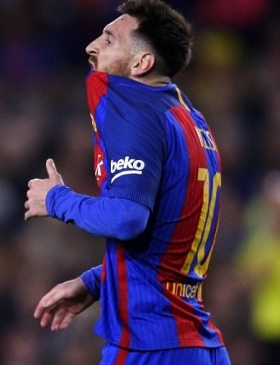The fall of La Masia – is Barcelona’s dominance in Spain coming to an end?
The fall of La Masia – is Barcelona’s dominance in Spain coming to an end?

La Masia is the former home of the legendary FC Barcelona youth academy, where the club’s future prodigies would practice together, live together and develop their budding football abilities under the beating fury of the Catalonian sun.
From the outside, one of the most prestigious schools of football seems to be a typically quaint farmhouse made out of stone worn away during the building’s historic existence. It was built in 1702, but it wasn’t until 1979 that it was first used by the club to house young footballers who lived far away from Barcelona. From that year, until the relocation of the academy in 2011, La Masia steadily built the foundations and philosophies that the Catalonian based club still follow to the present day.
Barcelona’s game against Levante in 2012 saw the team reach a significant milestone – as for the first time in the club’s rich history, every member of the first team on that day had graduated through La Masia. The club went on to win the league title that season, and it would be their 22nd.
The likes of Cesc Fabregas, Carles Puyol, Gerard Pique and Andres Iniesta have gone on to become typical household names and cemented themselves in their positions as some of the best players to grace a football pitch.
But one name from that team sheet against Levante stands above the rest, and that is, of course, Lionel Messi. There is no doubt the diminutive Argentinian has gone on to become one of the world’s greatest footballers, and could very well be the best despite his rivalry with Cristiano Ronaldo.
As recent seasons have gone by, Barcelona’s arguably biggest rivals, Real Madrid, have secured themselves three Champions League trophies in their last four attempts and they also wrestled La Liga away from Catalonia last season. Despite big name departures of Xabi Alonso and Angel Di Maria, Los Blancos appear to have adequately replaced them through their Galactico policy, securing the signings of Gareth Bale and Toni Kroos.
In stark contrast, Barcelona’s transfer policy has been severely questioned in recent campaigns. The 2013-14 transfer window proved to bring about radical change for the club as the emphasis on La Masia youth proved less of a high priority. The naturally gifted Thiago, seen as the natural heir to Xavi and Iniesta, followed the outgoing Pep Guardiola to Bayern Munich for just shy of 30m euros. Despite the expected decline of Barcelona’s senior midfield pairing, Thiago incredibly still had concerns about a lack of playing time.
The drama surrounding Neymar’s switch to Barcelona saw the Blaugrana’s summer get even worse, as they found themselves hit with a transfer ban that prevented them from registering or fielding new transfers until early 2016. To counter this, Barcelona thought ahead and brought in the likes of Luis Suarez, Rakitic, Mathieu and shot-stopper Claudio Bravo.
These transfers saw some of the famous La Masia production line eventually being moved on. Cesc Fabregas made the switch to Chelsea and other talented first-teamers such as Denis Suarez and Gerard Deulofeu also moved away from the Spanish club. The further departures of long-standing servants Victor Valdes and Carles Puyol surely added to the instability surrounding the Catalan giants.
The increasing pressure to follow the free-spending precedent set by Real Madrid may be proving too much for Barcelona’s famed academy, while Los Blancos’ domestic and Champions League successes last season will have shaken the very foundations of FC Barcelona.
The succession of club president Joan Laporta by Sandro Rosell in 2010 may be a key factor in this eventual decline of La Masia. It would be a valid argument to suggest that Rosell had sanctioned the sale of his club’s youth products to pursue a similar Galactico policy that has helped bring recent success to rivals Real Madrid. However, many have accused him of breaking apart the very philosophies and essence that made La Masia one of the most famed youth academies in football history.
To add to the growing sense of danger, Barcelona’s B team, formerly competing in the Segunda, have struggled to rise back up through the system after relegation to Spain’s third-tier in 2015. However, the main concern for Barcelona may not have been the relegation, but rather the obvious lack of players ready to make the jump into the first team set-up.
The controversy surrounding current Barcelona president Josep Maria Bartomeu has also contributed to the feeling of uncertainty surrounding the Blaugrana. Many fans want him to leave his post, but as it appears he will retain control of his position once again.
Barcelona have been linked with puzzling targets in the current transfer market and with the potential addition of Tottenham Hotspur failure Paulinho in progress, it does appear that the focus on the production of young talent at the club has well and truly come to an end.



Chelsea news
Man Utd & Chelsea want to land Marc Guehi?
John Terry wants Chelsea to re-sign Thiago Silva in January
Tottenham Hotspur news
Man Utd & Spurs ready to spend £26m on German winger
Tottenham serious about signing Brazilian striker in January